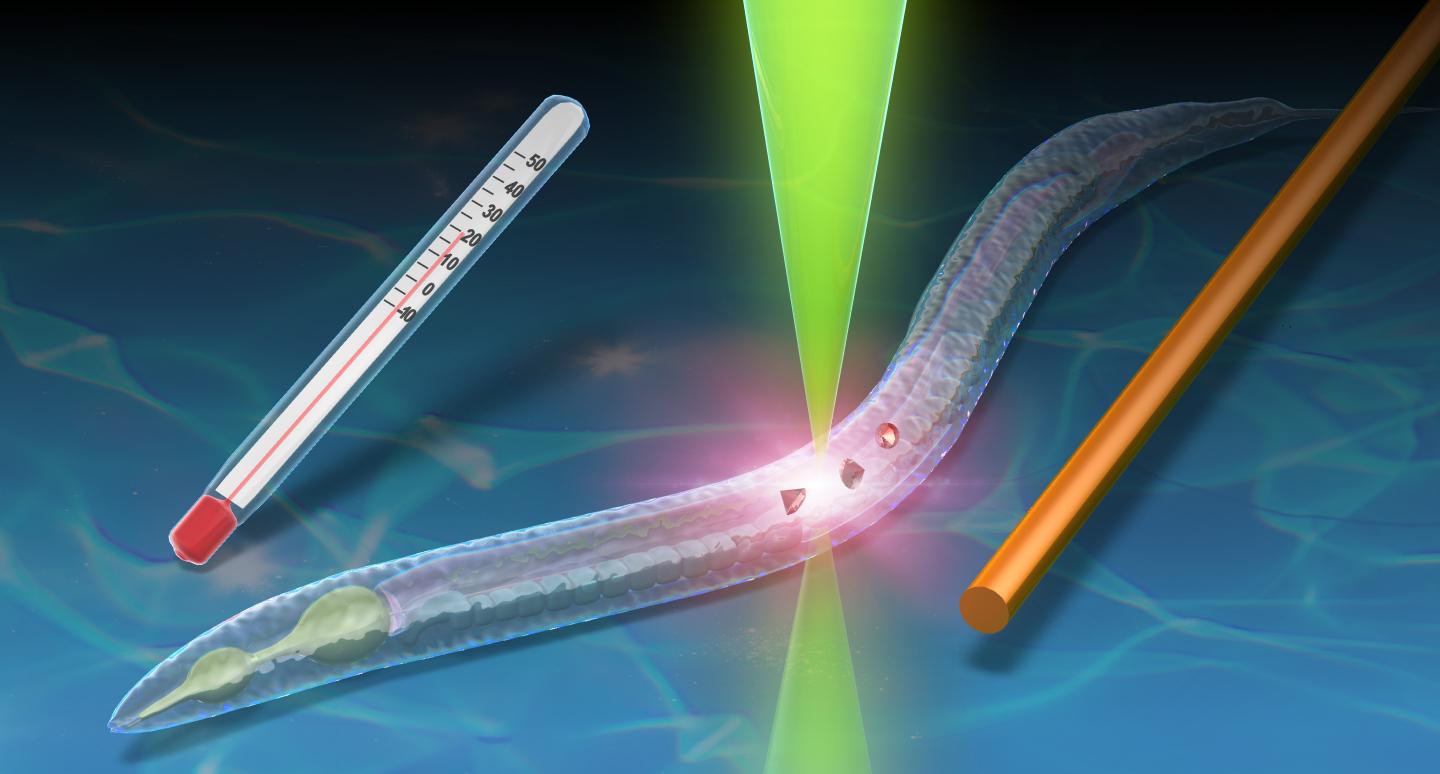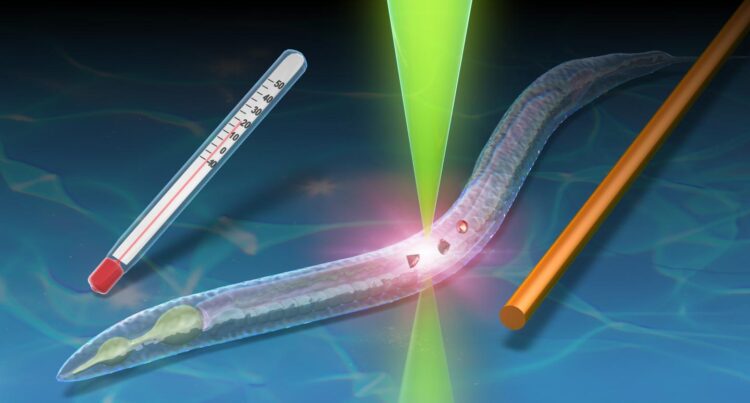Quantum thermometer using nanodiamonds senses a ‘fever’ in tiny worms C. elegans

Credit: Masazumi Fujiwara, Osaka City University
A team from Osaka City University, in collaboration with other international partners, has demonstrated a reliable and precise microscope-based thermometer that works in live, microscopic animals based on quantum technology, specifically, detecting temperature-dependent properties of quantum spins in fluorescent nanodiamonds.
The research is published in Science Advances.
The optical microscope is one of the most basic tools for analysis in biology that uses visible light to allow the naked eye to see microscopic structures. In the modern laboratory, fluorescence microscope, an enhanced version of the optical microscope with various fluorescent biomarkers, is more frequently used. Recent advancements in such fluorescence microscopy have allowed for live imaging of the details of a structure, and through this, obtaining various physiological parameters in these structures, such as pH, reactive oxygen species, and temperature.
Quantum sensing is a technology that exploits the ultimate sensitivity of fragile quantum systems to the surrounding environment. High-contrast MRIs are examples of quantum spins in fluorescent diamonds and are some of the most advanced quantum systems working at the forefront of real-world applications. Applications of this technique to thermal biology were introduced seven years ago to quantify temperatures inside cultured cells. However, they had yet to be applied to dynamic biological systems where heat and temperature are more actively involved in biological processes.
The research team decorated the surface of the nanodiamonds with polymer structures and injected them to C. elegans nematode worms, one of the most popular model animals in biology. They needed to know the base “healthy” temperature of the worms. Once inside, the nanodiamonds moved quickly but the team’s novel quantum thermometry algorithm successfully tracked them and steadily measured the temperature. A fever was induced within the worms by stimulating their mitochondria with a pharmacological treatment. The team’s quantum thermometer successfully observed a temperature increase in the worms.
“It was fascinating to see quantum technology work so well in live animals and I never imagined the temperature of tiny worms less than 1 mm in size could deviate from the norm and develop into a fever,” said Masazumi Fujiwara, a lecturer at the Department of Science at Osaka City University. “Our results are an important milestone that will guide the future direction of quantum sensing as it shows how it contributes to biology,”
###
Osaka City University’s strategic grant spearheaded this interdisciplinary and international collaboration of six institutions from four countries, consisting of Osaka City University, Keio University, Kyoto University from Japan, Humboldt University of Berlin (Germany), Soochow University (China), and Chapman University (USA).
This research was co-authored by Fujiwara, Sun, Dohms, Nishimura, Suto, Takezawa, Oshimi, Zhao, Sadzak, Umehara, Teki, Komatsu, Benson, Shikano and Kage-Nakadai.
Short Video is available at: https:/
Media Contact
James Gracey
[email protected]
Original Source
https:/
Related Journal Article
http://dx.





